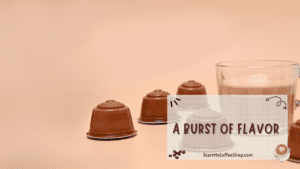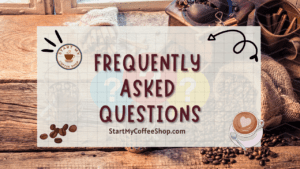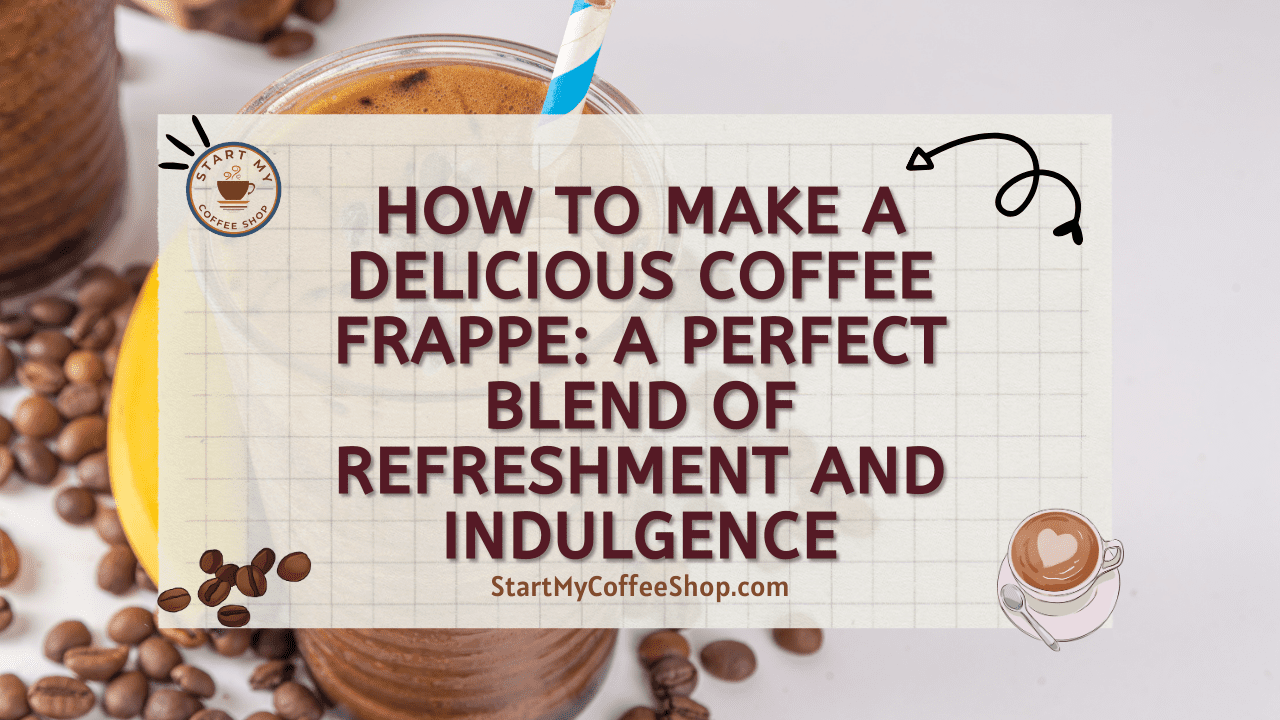Coffee lovers are aware that frothy and luscious coffee foam can enhance the overall coffee-drinking experience. Whether you prefer lattes, cappuccinos, or macchiatos, achieving a velvety froth on top of your beverage is an art that requires meticulous attention to detail.
The best way to create coffee foam is for you to mix equal parts of hot milk and water, froth or whisk the blend until foamy, then gently pour it over your coffee. Optionally, add sweeteners or flavorings for more flavor.
This article will reveal the optimal method for producing coffee foam that will delight your taste receptors and enrich your mornings. By following a few easy steps, you can transform your home-brewed coffee into something worthy of a barista.
The Foundation of Coffee Foam

Understanding the critical basic materials that form the base of this velvety treat – hot milk and water – is the first step in creating great coffee foam. To achieve the perfect foam, precision, and attention to detail are required, as each constituent plays an important part in defining the texture and flavor of the final result.
Gather your ingredients for this delicious process: a container, hot milk, and hot water. The trick to creating a great foam is to use equal parts hot milk and hot water. The milk’s temperature is essential; it should be just below boiling to avoid scorching or curdling. Gradually heating the milk will guarantee that it preserves its natural sweetness and creamy properties, which are necessary for making a smooth foam. To get the desired foam consistency, the water should be blistering hot. When coupled with milk, hot water activates the milk’s proteins, promoting a delicate balance of stability and lightness in the foam. This interaction is responsible for the lovely, airy texture that covers the surface of your coffee.
When creating the perfect coffee froth, the milk you use is also important. Milk comes in a variety of textures and flavors, including whole milk, skim milk, almond milk, and oat milk. Whole milk is noted for its richness and creamy mouthfeel, whilst almond milk has a nutty undertone and oat milk has a mild sweetness. Experiment with various milk options to find the one that best suits your tastes. After you’ve gathered all of your items, put the heated milk and water in a container. Using an equal amount of both ingredients creates an excellent balance, resulting in a constant and smooth foam. Take care not to overheat the milk, since this might cause scorching or curdling, resulting in poor foam.
Once the base is in place, the milk-water mixture acts as a well-rounded canvas for your foam. The combination of these ingredients provides the ideal setting for capturing the essence of your coffee’s flavor and aroma, improving your overall coffee-drinking experience. It is important to understand that the quality of your ingredients has a direct impact on the outcome of your foam. To achieve the greatest results, use fresh, high-quality milk and water. Experimenting with the milk-to-water ratio can also lead to exciting discoveries, allowing you to fine-tune the foam to your satisfaction.
Making coffee froth is more than just a culinary venture; it is an art form that demands experience and attention to precision. It’s a satisfying experience to perfect the process of blending hot milk and water to produce the appropriate canvas for your foam. You will gradually develop a sense of intuition and skill, allowing you to generate froth comparable to that of experienced baristas.
Read more about: How to Make a Business Plan for a Coffee Shop: Navigating the Business Plan Journey
Frothing or Whisking: The Magical Process
When you’ve found the proper milk-water ratio, the following step is when the real magic happens: foaming or whisking. This key step converts the simple mixture into a creamy and dreamy froth that elegantly and finesse tops your coffee. There are several methods for frothing or whisking your blend, each capable of producing delectable results.
The handheld milk frother is one of the most popular and efficient appliances for making coffee foam. This handy item is widely accessible in kitchen stores and online, and it greatly simplifies the foaming procedure. The frother comes to life with the push of a button, aggressively churning the milk-water mixture and adding air to the concoction. As a result, the formerly flat liquid transforms into a silky and airy foam that is ready to garnish your coffee. Don’t worry if you don’t have a frother on hand! A simple whisk can also do wonders. Though it takes a little more effort and time than a frother, vigorously whisking achieves the same purpose of infusing air into the blend. It’s a more hands-on approach that takes you back to the artisanal roots of coffee-making.
Regardless of the method you use, keep a regular and steady movement while frothing or whisking. The even distribution of air throughout the mixture is the key to producing a homogeneous and delicious foam. Avoid rapid movements or pauses in the middle of the operation, as these can result in uneven foam texture and the presence of undesirable big bubbles. The ideal coffee foam should be velvety smooth, similar to the texture of a delicate cloud. When you reach this point, you’ll know you’re on the right course to making the ultimate foam-topped coffee. Allow plenty of time for frothing or whisking and don’t rush the change. A little perseverance can go a long way toward producing an amazing coffee experience.
You’ll be able to watch the milk-water mixture transform as you whisk or froth it. The once-flat liquid will gradually thicken and expand, taking on the wonderful appearance of coffee froth. It’s an enthralling sight that captures the essence of artisanal coffee craftsmanship. Keep in mind that frothing or whisking is an art as much as a science. Accept the creative and personal touch that comes with hand-making coffee foam. Each smooth swirl or quick whisk symbolizes your commitment to improving your coffee experience.
Artful Pouring for Picture-Perfect Foam
With your newly made coffee foam in hand, the next step in creating a genuinely great coffee experience is to carefully and deftly pour it over your coffee. This seemingly simple act has the potential to take your cup of coffee to new levels of enjoyment. The secret to a harmonic marriage of tastes and a visually appealing appearance is a smooth and steady pour. Consider yourself a professional barista, holding the foam container slightly higher than your coffee cup. You’ll notice the foam delicately cascading onto the surface of the coffee as you pour, like a beautiful ballet of textures and fragrances. Baristas in specialty coffee shops use this technique to produce unique layers in the cup, boosting its overall appeal.
The layering technique not only enhances the visual appeal of the coffee but also contributes to its flavor depth. When you take a drink, the foam adds a creamy, velvety experience that perfectly matches the rich flavors of the coffee beneath. Each mouthful is a beautiful symphony of textures and flavors, leaving you with a lingering sensation of contentment thanks to the flawless integration of foam and coffee. The equal distribution of froth across the surface of the coffee is one of the key advantages of a gentle pour. This provides a constant and well-balanced blend of coffee and foam in each sip. A hasty or vigorous pour, on the other hand, may result in uneven foam distribution, depriving certain sections of the drink of the wonderful foam texture.
By taking your time and pouring the foam softly, you allow the two components – coffee and foam – to come together naturally, enhancing the flavors and characteristics of each other. As a result, the coffee experience is cohesive and exquisite, tantalizing both the taste buds and the senses. As you perfect the art of pouring froth atop your coffee, you’ll realize that the small details make all the difference. Each step in the process, from producing the foam to precisely pouring it, adds to the overall enjoyment of your coffee. These subtle differences are what distinguish a good cup of coffee from a great one.
A Burst of Flavor

While the coffee foam alone lends a wonderful creaminess to your beverage, combining sugars or flavorings opens up a world of flavor options. These delectable additions can elevate your coffee experience by exciting your taste senses with a variety of appealing fragrances and flavors.
Classic flavorings such as cocoa powder, cinnamon, and nutmeg are classic options that add a welcoming and recognizable flavor to your coffee. A simple sprinkle of cocoa powder on top of the froth provides a hint of chocolatey sweetness, great for people who like their coffee with a touch of richness. Cinnamon infuses a homey mood, reminiscent of freshly baked pastries, with its warm and aromatic undertones. Nutmeg, on the other hand, gives a subtle nutty flavor to the coffee’s natural earthiness.
Consider adding natural sweeteners like honey or a dash of vanilla extract to your coffee froth if you have a sweet tooth. A sprinkle of honey adds a delicate sweetness to the entire flavor profile without dominating the coffee’s flavor. Honey’s natural sweetness has a complex flavor that produces a perfect balance, making it an excellent choice for people looking for a more refined and subtle sweetness.
A dab of vanilla extract, on the other hand, adds a touch of sophistication to your coffee. Vanilla’s floral and aromatic overtones blend delicately with the coffee’s earthy undertones, improving the entire taste experience. The addition of sweeteners and flavorings to your coffee adds layers of depth, allowing you to experience a variety of taste sensations with each drink. One of the most enjoyable aspects of experimenting with coffee flavorings is the ability to tailor your coffee to your tastes and mood. The possibilities are unlimited, whether you need the nostalgic warmth of cinnamon on a cool morning or the luscious richness of cocoa powder after a long day.
Being a coffee aficionado is the art of blending different flavorings to produce your distinctive coffee froth. You can blend and layer flavors, much like a painter with a bright palette, to create a coffee experience that speaks to your soul. Begin with simple taste combinations and work your way up to more complex flavor profiles. As you experiment with different sweeteners and flavorings, let your taste sensations guide you. Take note of the subtleties that each addition adds to your coffee, and then alter the quantities to achieve the exact balance.
Read more about: How to Make a Business Plan for Coffee: Conquering the Coffee Industry
Frequently Asked Questions

What are the key ingredients for making coffee foam?
To make coffee foam, you will need to combine hot water and hot milk in equal portions. The combination of these two components forms the basis for producing a froth that is velvety in texture and creamy in consistency when added to your coffee.
Can I make coffee foam without using a frother or whisk?
Yes, it is still possible to generate froth for coffee even without the necessary equipment. If you do not have access to a frother, you can use a whisk in its place. While it requires more effort and time, aggressively whisking the milk and water mixture will result in the incorporation of air into the liquid, which will result in a delectable froth.
What flavorings can I use to make my coffee foam taste better?
There is essentially no end to the number of ways in which you can improve the flavor of the foam on your coffee. Additions such as cocoa powder, cinnamon, nutmeg, honey, or even a drop or two of vanilla extract are typical choices. You should try out several different flavor profiles before settling on the one that works best with the way you like your coffee.
To learn more on how to start your own coffee shop, check out my startup documents here.
Disclaimer: The information provided by StartMyCoffeeShop.com (“The Site”) is for general informational purposes only. All information on the Site is provided in good faith. However, we make no representation or warranty of any kind, express or implied, regarding the accuracy, adequacy, validity, reliability, availability, or completeness of any information on the Site. Under no circumstance shall we have any liability to you for any loss or damage of any kind incurred as a result of the use of the Site or Reliance on any information provided on the Site. Your use of the Site and reliance on any information on the Site is solely at your own risk. This blog post is for educational purposes only and does not constitute legal advice. Please consult a legal expert to address your specific needs. Terms and Conditions. (https://startmycoffeeshop.com/terms-and-conditions/)

Hi! I’m Shawn Chun
My adventure in coffee began when I first launched my first coffee shop back in the early 2000s. I had to figure out so many things on my own and to make it worse within 2 years of opening two large corporate coffee chains moved in just blocks away from me!
As I saw smaller and even some larger coffee shops in the neighborhood slowly lose customers to these giant coffee chains and slowly close up shop, I knew that I had to start getting creative…or go out of business.
I (like you may be) knew the coffee industry well. I could make the best latte art around and the foam on my caps was the fluffiest you have ever seen. I even had the best state-of-the-art 2 group digital Nuova Simonelli machine money could buy. But I knew that these things alone would not be enough to lure customers away from the name brand established coffee shops.
Eventually, through lots of trial and error as well as perseverance and creativity I did find a way to not only survive but also thrive in the coffee/espresso industry even while those corporate coffee chains stayed put. During those years I learned to adapt and always faced new challenges. It was not always easy, however, in the end, I was the sole survivor independent coffee shop within a 10-mile radius of my location. Just two corporate coffee chains and I were left after that year. All told the corporate coffee chains took down over 15 small independent coffee shops and kiosks and I was the last one standing and thriving.
Along the years I meet others with the same passion for coffee and I quickly learned that it is not only “how good a barista is” that makes a coffee shop successful, but the business side of coffee as well.
Hence why I started this website you are on now. To provide the tools and resources for up and coming coffee shop owners to gain that vital insight and knowledge on how to start a coffee shop successfully.
Stick around, browse through my helpful blog and resources and enjoy your stay! With lots of LATTE LOVE!
Shawn







